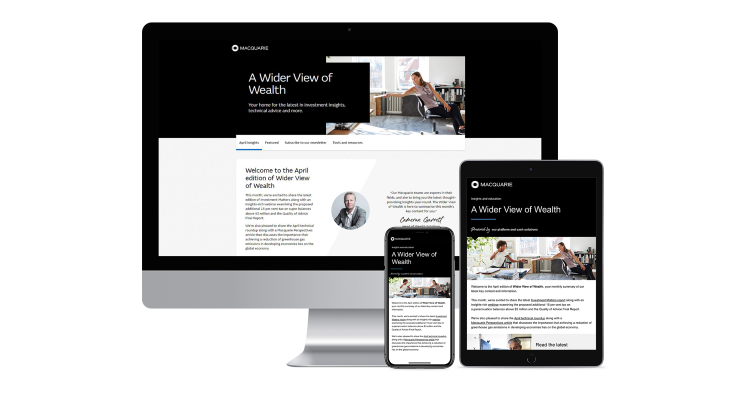3 options for integrating managed accounts
Advisers are increasingly looking to integrate separately managed accounts (SMAs) into their practice. By automating the investment delivery for multiple clients, SMAs mean advisers have more time to focus on personalised client service.
In brief, the benefits of SMAs are:
- Scalability –multiple clients can be managed at the same time, including changes to their investment components
- Efficiency – your investment mandate is executed consistently across all clients
- Reduced cost to client – overall fees could be lower depending on the types of investments chosen
- Fewer administrative tasks – you can spend more time with clients understanding their needs and providing strategic advice
- Reduced risk – faster time to market and ability to dynamically manage the asset allocation
How do you integrate SMAs into your business?
There are three options available:
- Buy – select existing SMA investments to implement your investment philosophy across a range of asset classes provided by a number of managers
- Partner – partner with experts (consultants, fund managers or research houses) to create SMA models
- Build – use your in-house investment capability to create SMA models
Learn more about our managed account solutions
Which model is right for you?
Buy
Firm A want to deliver consistent investment outcomes for their clients. The business is also keen to remove the burden of investments selection and manage risk for their advisers. The business is also looking to drive scalability; reducing the need to generate records of advice, and achieve efficiencies in the investment implementation process.
The business owners agreed that a managed account solution would help the firm be more proactive and less reactive. It would mean they could re-focus the conversation with clients from “How are our investments performing?” to “How are we tracking against our goals and objectives?”
The firm identified an SMA available for investment through the Macquarie Wrap platform that reflected its existing investment philosophy.
Selecting this SMA would allow clients’ portfolios to be executed in a much more efficient way; and with their clients already on Macquarie Wrap, it was easy to switch clients into the chosen SMA.
Today, approximately 80% of Firm A’s clients are managed within a multi-asset class SMA. Administrative time has been reduced significantly and staff can spend the time previously taken up with portfolio rebalancing on more value-add tasks.
Partner
Firm B is looking for an efficient investment execution solution that supports its investment philosophy and goals-based planning approach.
After struggling to find an existing SMA model that matched its needs, the firm decided to partner with an investment manager.
The business owners chose Macquarie’s Wrap platform because it had sufficient flexibility for the firm to implement its own SMA and customize its own client reports. This allowed them to ensure the SMA aligned to its approach, while benefiting from the credibility and investment expertise of the investment partner.
As a result, Firm B has established a new asset management arm of the business to implement and manage the new investment solution. It has also updated its value proposition to promote its goals-based approach.
By partnering to build its own SMA, Firm B has maintained its reputation for investment expertise while building significant scale into the business.
Build
With multiple clients off-platform, Firm C was running five systems to consolidate and purchase assets for those clients.
The firm had its own investment philosophy and was experienced enough to be a manager in its own right, creating its own portfolios.
The business owners had considerable investment expertise, but they wanted more time to spend on developing strategic client relationships, rather than administration.
By choosing to build an SMA model with Macquarie and using its existing processes and investment management capability, Firm C has created a flexible, scalable solution.
Previously, Firm C’s manual investment implementation meant each time they made a portfolio change, clients were getting different outcomes due to timings of trades and delays in receiving client authorities.
Today, all of Firm C’s clients using the SMA benefit from consistent investment outcomes and track in-line with their portfolio changes, while the firm saves on discussion, documentation and implementation. Advisers find it easier to update clients on their portfolio and no longer spend time implementing investment changes and managing corporate actions.
After Firm C converted 25% of its business to managed accounts, the efficiencies generated meant that two administrative staff could be moved into other roles.
Which SMA option you choose will largely depend on your current investment capability. It will also be informed by the trade-offs you’re prepared to make around upfront time and investment, and the level of control you want to retain.
Make sure you talk to an expert who has seen all three options in action before making your decision.



